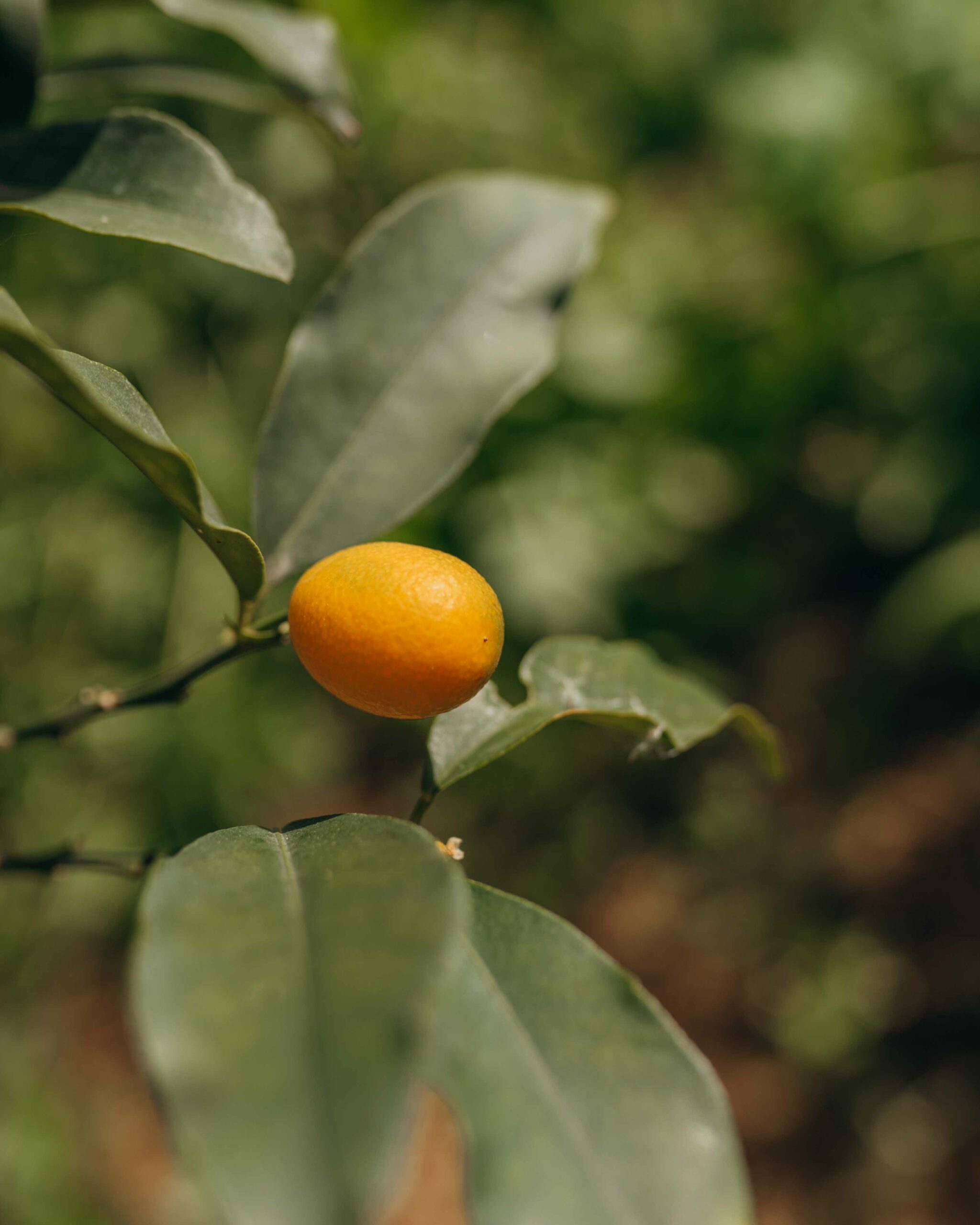Fortunella spp.
Kumquat, Zwergorange
Englische Bezeichnung: Kumquat
Spanische Bezeichnung: Naranja enano, Naranja chino, Kumquat

Familie
Rautengewächse (Rutaceae)
Hauptbestandteile:
Mineralstoffe: Kalium, Calcium
Vitamine: C, Beta-Carotin (Provitamin A)
Sekundäre Pflanzenstoffe: Flavonoide, Carotinoide, Phenolsäuren, Terpene
Ernte-Hinweise:
Reif sind die Früchte, wenn sie vollkommen orange gefärbt sind.
Verwendung:
-
Frucht: Obstsalat, Chutney, Marmalade, Dessert, Drinks, auf Sandwiches…
Die ursprüngliche Heimat der Kumquat liegt im Südosten Chinas. Von dort nahm der englische Botaniker Robert Fortune die Pflanze um 1846 mit nach Europa, wo sie lange Zeit als reine Zierpflanze galt.
Die Kumquats müssen nicht geschält werden – Im Gegenteil, speziell die Schale ist besonders aromatisch und süß!
Family
Rue family (Rutaceae)
Main components:
Minerals: potassium, calcium
Vitamins: C, beta-carotene (provitamin A)
Secondary plant substances: flavonoids, carotenoids, phenolic acids, terpenes
Harvesting Guideline:
The fruits are ripe when they are completely orange.
Use:
-
Fruit: fruit salad, chutney, marmalade, dessert, drinks, on sandwiches…
The original home of the kumquat is in south-eastern China. From there, the English botanist Robert Fortune took the plant to Europe around 1846, where it was considered a purely ornamental plant for a long time.
Kumquats do not need to be peeled – on the contrary, especially the peel is particularly aromatic and sweet!
Familia
Familia de las rudas (Rutaceae)
Componentes principales:
Minerales: potasio, calcio
Vitaminas: C, betacaroteno (provitamina A)
Sustancias vegetales secundarias: flavonoides, carotenoides, ácidos fenólicos, terpenos
Guía de cosecha:
Los frutos están maduros cuando están completamente anaranjados.
Uso:
-
Fruta: macedonia, chutney, mermelada, postre, bebidas, en bocadillos…
El origen del kumquat está en el sudeste de China. Desde allí, el botánico inglés Robert Fortune llevó la planta a Europa hacia 1846, donde durante mucho tiempo se consideró una planta puramente ornamental.
Los kumquats no necesitan pelarse; al contrario, ¡sobre todo la cáscara es especialmente aromática y dulce!






































